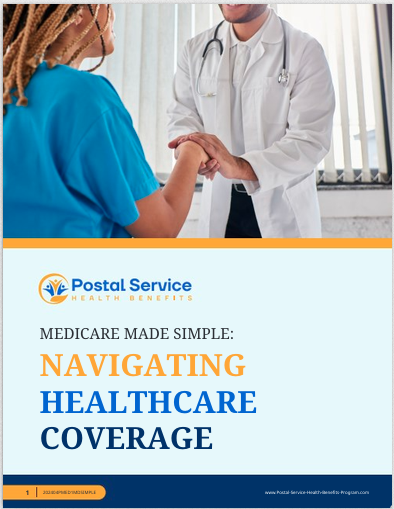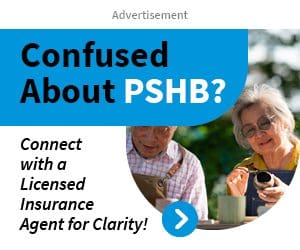Key Takeaways
- USPS employees transitioning to the Postal Service Health Benefits (PSHB) program should understand how it interacts with Medicare Part B, as this will impact their coverage and potential out-of-pocket costs.
- It’s crucial for USPS workers to make timely decisions regarding Medicare Part B enrollment to avoid penalties and ensure seamless healthcare coverage under the new PSHB system.
PSHB and Medicare Part B: USPS Workers, Here’s What You Need to Prepare For
As the Postal Service Health Benefits (PSHB) program prepares to roll out in January 2025, USPS workers face significant changes in their healthcare options. One of the most critical aspects of this transition involves understanding how Medicare Part B will interact with the new PSHB plans. This article delves into what USPS workers need to know about Medicare Part B, the implications of the PSHB program, and the steps they should take to prepare for these changes.
Understanding the PSHB Program
The Postal Service Health Benefits (PSHB) program is a new health insurance system specifically designed for U.S. Postal Service employees, retirees, and their eligible family members. This program was established as part of the Postal Service Reform Act of 2022. It aims to provide USPS workers with healthcare coverage tailored to their unique needs while aligning with broader federal health insurance structures.
The PSHB program will be administered by the Office of Personnel Management (OPM) and will replace the existing Federal Employees Health Benefits (FEHB) program for postal workers. One of the key differences is the requirement for eligible retirees to enroll in Medicare Part B as a condition for participation in PSHB. This requirement has significant implications for how USPS workers plan their healthcare during retirement.
The Role of Medicare Part B in PSHB
Medicare Part B covers outpatient services, including doctor visits, preventive services, and durable medical equipment. It is an essential part of the Medicare program, complementing Medicare Part A, which covers inpatient hospital stays. Under the new PSHB program, Medicare Part B will play a crucial role in coordinating benefits for retirees.
For current USPS employees who are approaching retirement, enrolling in Medicare Part B is not mandatory until they retire. However, once they retire and become eligible for PSHB, they must enroll in Medicare Part B to maintain their health benefits under the PSHB program. This enrollment will help reduce the out-of-pocket costs associated with outpatient care, as Medicare Part B will serve as the primary payer, with PSHB plans covering secondary costs.
Key Dates and Enrollment Periods
USPS employees nearing retirement must pay close attention to key dates and enrollment periods to ensure a smooth transition to the PSHB program. The general enrollment period for Medicare Part B occurs annually from January 1 to March 31, with coverage starting on July 1 of the same year. However, special enrollment periods may apply if a USPS worker retires outside this window, allowing them to sign up for Medicare Part B without incurring late penalties.
It’s important to note that if a retiree delays enrolling in Medicare Part B beyond their initial eligibility period, they may face a late enrollment penalty. This penalty results in a higher monthly premium for as long as they have Medicare Part B coverage. USPS workers should carefully consider their retirement timelines and Medicare Part B enrollment to avoid these additional costs.
Preparing for the Transition
To effectively prepare for the transition to the PSHB program, USPS workers should take the following steps:
1. Review Current Healthcare Coverage
USPS workers should start by reviewing their current healthcare coverage under the FEHB program. Understanding what is covered and how costs are shared will help them anticipate changes under the new PSHB system. This comparison can also highlight any gaps in coverage that Medicare Part B might fill once they retire.
2. Understand Medicare Part B Costs
Before enrolling in Medicare Part B, USPS workers should be aware of the associated costs. Medicare Part B requires a monthly premium, which is determined based on the beneficiary’s income. Higher-income individuals may pay more due to Income-Related Monthly Adjustment Amounts (IRMAA). Understanding these costs will help workers budget for their healthcare expenses during retirement.
3. Coordinate with PSHB Plan Offerings
As the PSHB program will offer multiple plan options, USPS workers should compare these options carefully. Each plan will have different cost-sharing structures, benefits, and provider networks. It’s essential to choose a plan that complements Medicare Part B coverage to minimize out-of-pocket expenses. Workers should consider their healthcare needs and preferences when selecting a PSHB plan.
4. Seek Guidance from Licensed Insurance Agents
Navigating the complexities of Medicare Part B and the PSHB program can be challenging. USPS workers are encouraged to consult with licensed insurance agents who specialize in federal employee benefits. These professionals can provide personalized advice, helping workers make informed decisions about their healthcare coverage.
Impact on Retirees and Family Members
The requirement to enroll in Medicare Part B as a condition for PSHB eligibility primarily affects retirees. However, this change also impacts eligible family members covered under a retiree’s health plan. Spouses and dependents who are eligible for Medicare must also enroll in Medicare Part B to maintain their coverage under the PSHB program.
This requirement may result in additional costs for family members who are not currently enrolled in Medicare Part B. Therefore, it’s crucial for USPS workers to communicate with their family members about these changes and ensure everyone is prepared to meet the new requirements.
What Happens if You Don’t Enroll in Medicare Part B?
Failing to enroll in Medicare Part B when required can have significant consequences for USPS retirees and their families. Without Medicare Part B, PSHB plans may not cover all outpatient services, leading to higher out-of-pocket costs. Additionally, retirees who delay enrollment could face penalties that increase their Medicare Part B premiums permanently.
USPS workers should be proactive in understanding these consequences and ensure timely enrollment in Medicare Part B to avoid gaps in coverage and unexpected expenses. This proactive approach will help maintain comprehensive healthcare coverage during retirement.
Common Questions USPS Workers Have About PSHB and Medicare Part B
What is the difference between PSHB and FEHB?
The PSHB program is specifically designed for USPS employees, retirees, and their families, whereas the FEHB program covers all federal employees and retirees. The PSHB program will replace the FEHB for postal workers starting in 2025 and requires Medicare Part B enrollment for retirees.
Do I have to enroll in Medicare Part B if I’m still working?
No, active USPS employees are not required to enroll in Medicare Part B until they retire. Once they retire and become eligible for PSHB, Medicare Part B enrollment becomes mandatory to maintain their health benefits.
Will my healthcare costs increase with PSHB and Medicare Part B?
Healthcare costs under the PSHB program and Medicare Part B will depend on the plan selected and individual circumstances, including income and healthcare needs. While Medicare Part B has an associated premium, it can reduce out-of-pocket costs by covering outpatient services that might otherwise be expensive.
Steps to Take Before 2025
As the PSHB program approaches its implementation date, USPS workers should take proactive steps to ensure they are ready for the transition. These steps include:
- Educate Yourself: Stay informed about the upcoming changes by attending informational sessions, reading official communications from the USPS, and consulting reliable sources.
- Plan Your Finances: Consider the costs associated with Medicare Part B premiums and how they will fit into your retirement budget. Factor in potential IRMAA adjustments if applicable.
- Check Eligibility: Verify your eligibility for both PSHB and Medicare Part B. Ensure that you and your family members meet all requirements for enrollment.
- Stay Ahead of Deadlines: Mark important enrollment periods on your calendar and set reminders to avoid missing critical deadlines that could result in penalties or gaps in coverage.
Navigating the Future of Healthcare as a USPS Retiree
As the USPS prepares to transition its workers and retirees to the PSHB program, understanding the interplay between PSHB and Medicare Part B is crucial. USPS workers who take the time to educate themselves about these changes and prepare accordingly will be better positioned to make informed decisions about their healthcare coverage. By enrolling in Medicare Part B and selecting the appropriate PSHB plan, retirees can ensure they receive comprehensive healthcare while managing their costs effectively.
For further information and personalized advice, USPS workers should consider consulting with licensed insurance agents who specialize in federal employee benefits. These experts can help navigate the complexities of the PSHB program and Medicare Part B, providing valuable guidance during this transition period.
Contact Information:
Email: [email protected]
Phone: 8595550123






